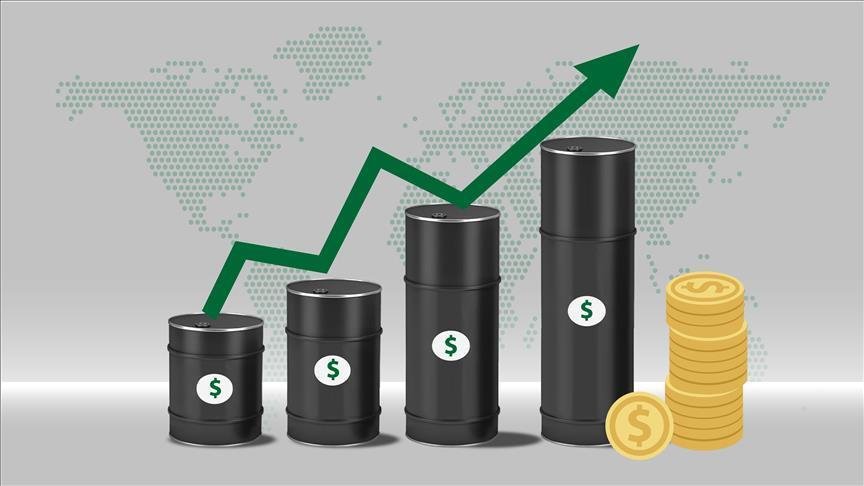Physical Address
304 North Cardinal St.
Dorchester Center, MA 02124

Crude oil is one of the world’s most vital commodities. It powers global transportation, fuels industries, and influences the cost of everyday goods. But unlike some resources with relatively stable prices, crude oil rarely stands still. Its price shifts every trading day, sometimes by only a few cents, sometimes by several dollars per barrel.
For businesses, governments, and consumers alike, understanding why oil prices fluctuate daily is more than academic curiosity, it’s essential knowledge. From geopolitical tensions to shifts in global demand, dozens of factors interact in complex ways to move prices.
In this article, we break down the key drivers of daily crude oil price movements, drawing on insights from global energy organizations, financial markets, and historical case studies.

The Core Driver At the most basic level, oil prices like any commodity are determined by supply and demand. Supply refers to how much crude oil is being produced and delivered to the market. Demand refers to how much crude oil is being consumed by refineries, industries, and consumers. When supply exceeds demand, prices fall. When demand outpaces supply, prices rise. For daily price movements, the market reacts to even small signals: An unexpected pipeline outage or refinery fire can cut supply and drive prices higher. Conversely, news of a new oil field discovery or a rebound in U.S. shale output may push prices lower. Example: In 2020, during the early months of the COVID-19 pandemic, global oil demand collapsed by nearly 9 million barrels per day (IEA ), driving prices into negative territory for the first time in history.
Because the U.S. is both a top oil producer and consumer, its data releases strongly influence daily price movements.
The most closely watched reports include:
Weekly U.S. crude oil inventory reports from the U.S. Energy Information Administration (EIA).
A larger-than-expected build in crude stocks signals oversupply → prices fall.
A drawdown in inventories signals tight supply → prices rise.
U.S. production levels, particularly shale oil, which can ramp up or decline rapidly depending on drilling activity.
In June 2023, a surprise drop of over 9 million barrels in U.S. crude inventories sent prices rallying over 3% in a single day (Bloomberg).
Crude oil demand is closely tied to the health of the global economy. Daily oil price fluctuations often track economic indicators such as:
GDP growth rates in major economies (U.S., EU, China).
Industrial output figures, which indicate energy demand.
Consumer spending and travel data, since transport fuels account for over 60% of oil demand (IEA).
When economic data points to growth, traders expect higher oil consumption and bid prices up. Conversely, recession fears often drag oil prices down.
Concerns over slowing growth in China, the world’s second-largest oil consumer regularly trigger daily oil price declines when weaker economic data is released.
The Organization of the Petroleum Exporting Countries (OPEC), along with its allies (known as OPEC+), has an outsized influence on crude oil prices. Together, they control about 40% of global oil supply (OPEC).
When OPEC+ decides to cut production, oil prices typically rise because traders anticipate tighter supply. When the group decides to increase production quotas, prices often fall.
Example: In October 2022, OPEC+ announced a production cut of 2 million barrels per day, which pushed prices higher despite global recession fears (Reuters).
Daily traders often speculate in anticipation of OPEC announcements, causing price swings even before decisions are finalized.

Oil is heavily concentrated in politically sensitive regions like the Middle East, Russia, and Venezuela. Any sign of instability can spark immediate price reactions.
Wars and conflicts in producing regions threaten supply chains.
Sanctions (such as U.S. sanctions on Iran or Venezuela) restrict exports and reduce global supply.
Political unrest in key countries like Libya or Nigeria can lead to unplanned production outages.
In February 2022, Russia’s invasion of Ukraine sent Brent crude oil above $130 per barrel, its highest level since 2008 (Financial Times).
These moves often occur quickly, within hours of breaking news, showing how sensitive daily oil prices are to geopolitics.
Since oil is traded globally in U.S. dollars, fluctuations in the dollar’s value directly affect crude prices.
A strong dollar makes oil more expensive for buyers using other currencies, often leading to weaker demand and lower prices.
A weaker dollar boosts purchasing power abroad, often lifting oil prices.
During 2022, as the U.S. Federal Reserve aggressively raised interest rates, the dollar surged to a 20-year high (CNBC), contributing to downward pressure on oil prices.
Oil markets are not only shaped by fundamentals, they’re also heavily influenced by financial trading activity.
Hedge funds, institutional investors, and day traders constantly buy and sell oil futures contracts based on their expectations of future supply-demand balances. This speculative trading can amplify daily volatility.
Bullish sentiment (expecting prices to rise) drives rallies.
Bearish sentiment (expecting prices to fall) accelerates declines.
In April 2020, panic-driven speculative selling of oil futures contracts for May delivery caused prices to plunge below -$37 per barrel, an unprecedented collapse fueled more by trading mechanics than actual physical supply (BBC).
Weather plays a surprisingly large role in crude oil price movements.
Hurricanes in the Gulf of Mexico can knock out offshore drilling rigs and refineries, tightening supply.
Cold snaps increase demand for heating oil.
Heat waves drive up electricity demand, indirectly affecting oil consumption for power generation.
Hurricane Ida in 2021 disrupted nearly 1.7 million barrels per day of U.S. production, causing short-term spikes in crude oil prices (NOAA).
Advances in drilling technology (like hydraulic fracturing in the U.S.) or efficiency improvements in refining and transport can also impact daily oil prices, though usually over longer periods.
Still, news of policy changes (such as new environmental rules, subsidies for renewables, or bans on oil exploration) can spark immediate market reactions.
Daily crude oil price fluctuations are the product of a complex mix of factors:
Fundamentals (supply & demand, inventories, production).
Geopolitics (wars, sanctions, instability).
Financial markets (speculation, currency movements).
Unexpected shocks (natural disasters, pandemics).
For policymakers, companies, and consumers, understanding these drivers helps explain why prices at the pump shift so quickly and why predicting oil’s future is notoriously difficult.
As the energy transition accelerates and new dynamics emerge, daily oil price volatility will remain a barometer of global risk, economic health, and political stability.





